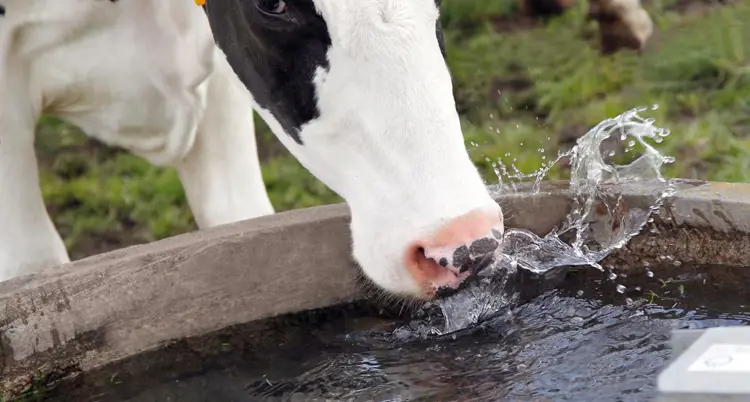Addressing Heat Stress in Dairy cows on pasture-based farms
Heat stress in dairy cattle is not a new concept. There is ongoing research showing the negative effect heat stress has financially on some dairy businesses. Research also suggests that calves born to mothers who experienced heat stress while in calf may be less productive later in their lives. It is true that the measures that can practically be implemented to reduce heat stress are more suited to TMR (Total Mixed Ration) farming systems and not pasture-based systems.

There are however some measures the pasture farms can implement and they are probably more practical than you may think. These strategies are not silver bullets to solve the problem but small changes in timing, infrastructure, and management may lead to many small gains in reducing the negative effect of heat stress and hopefully have a positive influence on the bottom line.
There is no doubt that heat stress is occurring on many pasture-based farms. The data collected (Figure 1) from the Log Tag recorders show the temperature humidity index on a farm in the Creighton area, Kwa-Zulu Natal. The device cannot record wind speed, which would influence the index, however, it still gives us information showing how frequently during the day cows could be experiencing high levels of heat stress.

Figure 1: Heat stress Index report - January 2024 (Creighton)
The main strategies of providing shade, wetting cows with water, and moving air with fans are not always practical but sometimes not impossible. Some pasture farmers provide shade for the dairy herd before afternoon milking and during the hottest part of the day when cows are not grazing.
Wetting cows removes the heat from the body as well as helps cool the animal through evaporation. Wetting the cows with a sprinkler in the holding yard can help cool them down. The concrete of the holding yard is often very hot before afternoon milking. Wetting or flooding the concrete to remove the heat before the cows walk into the holding yard could also help reduce the heat. Fans for airflow are not always practical but some measures of improving airflow in the milking parlour might be possible.

There are several additives and feeding strategies to help reduce the effect of heat stress and combat the heat created by rumination. The goal is to assist the rumen in maintaining a healthy rumen environment, maintaining feed intake and managing rumen pH. Yeast and yeast-based products, buffers and other microbe-enhancing products can assist with better rumen function. Other additives have different modes of action to assist with heat stress, such as the role chrome could have in assisting glucose uptake. Some research indicates that including capsicum extract in the cow’s diet could have a positive effect on blood flow. As the stimulated neurons widen the blood vessels allow more blood to pass through. This influence of blood flow and widening of vessels and capillaries might be similar to the sensation one might have when enjoying a good hot curry. Your face turns red, sweat pours from your brows and the body tries to cool itself. That depends on your tolerance of course.
An often overlooked and vital component is drinking water! On many farms, the herd size has grown over the years as well as the stocking density. Yet these farms often still have the same size water trough now as they did when milking half the number of cows. This is not always a problem if the cows are close enough to the water source as they will drink at different times and the flow rate into the trough might be able to keep up.
However, when the cows are further from the water source they will move as a herd and when they arrive in a large number some cows won’t have access to the water, or the water is depleted and cannot refill to meet the demand.
If you are finding more breakages of your water troughs, such as the float valves breaking, cattle may be desperately competing at the trough to drink. Large herds need a large amount of water, and even more on hot days. Water is not only needed to produce milk but also for other important bodily functions.
Load shedding often results in no water being pumped to water troughs. Many farms are now trying to redesign the drinking water system using gravity and water storage in tanks or reservoirs. The size of the water trough could also serve as a reservoir if the volume delivered to the trough is limited. Maybe two water troughs are better than one.
In a nutshell, many small improvements might reduce the negative effect of heat stress, or some sort of larger improvement or upgrade might be beneficial if there is an improvement in production and cow health. Additives can be an option and can have a positive impact. Look at your stock water system and its limitations, it might need upgrading after 30 years. Water is critical!
Contact your local De Heus technical advisor to help identify how winter impacts the dairy cow - https:// www.deheus.co.za/meet-our-team/.
